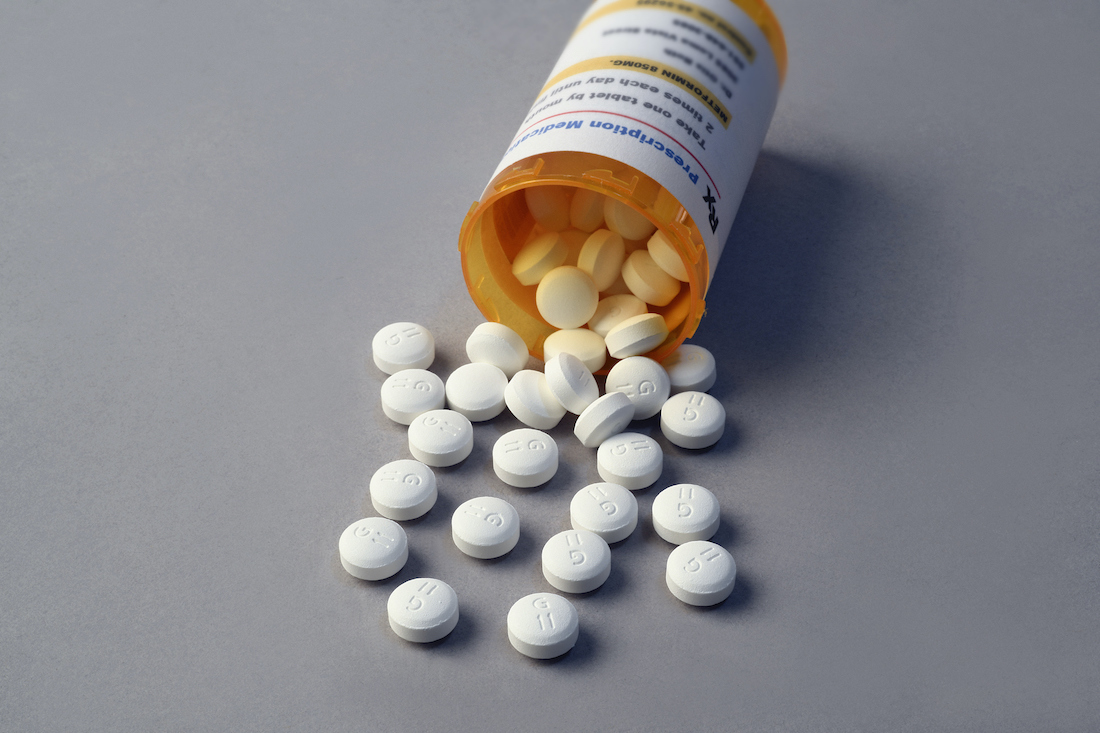Diabetes drug metformin may protect against radiation exposure
Findings from UTSW study offer potential applications in cancer treatment, nuclear accidents, and space exploration

DALLAS – Aug. 22, 2024 – Metformin, a well-tolerated diabetes drug prescribed to as many as 150 million people worldwide, may also protect cells from radiation damage, UT Southwestern Medical Center researchers report. The findings, published in PLOS ONE, could have broad implications for cancer patients, nuclear accident response teams, and even astronauts traveling in deep space.
“While metformin is primarily known as a safe drug to treat Type 2 diabetes, this report demonstrated that it is also a potent radiation countermeasure,” said the study’s Principal Investigator, Jerry Shay, Ph.D., Professor of Cell Biology and a member of the Harold C. Simmons Comprehensive Cancer Center at UT Southwestern.

In order to understand the protective mechanism, researchers examined the effects of metformin on human cells in vitro in relation to the production of a potent antioxidant, SOD1, in the cell nucleus. SOD1 performs DNA repair by removing superoxide free radicals that are produced as the result of radiation. Researchers found that when cells were treated with metformin, production of SOD1 increased in the cell nucleus of human fibroblasts.
To examine the effects of metformin in vivo, researchers injected mice with metformin for three days before exposing them to whole-body radiation. They then checked the rate of micronuclei development – a marker of genotoxicity – in the bone marrow. Mice treated with metformin showed reduced formation of micronuclei.
The researchers also studied the drug’s effects after exposure to galactic cosmic radiation (GCR), which occurs during space travel. A round-trip mission to Mars, for example, would expose astronauts to an unsafe level of GCR, so there is broad interest in possible solutions.
The team used a GCR simulator at the NASA Space Radiation Laboratory in collaboration with Brookhaven National Laboratory. Mice that did or did not receive metformin orally over three days received a dose of simulated GCR equal to a Mars mission. GCR caused significantly more genotoxicity, as indicated by formation of micronuclei, in mice that did not receive metformin than in those that did.
“This study advances the field to indicate that metformin may be a safe radioprotector for first responders to nuclear accidents and for protecting astronauts from the cancer risk and side effects of exposure to space radiation,” Dr. Shay said. “This study also suggests that metformin may be useful for treating patients with radiotherapy for cancer to reduce potential side effects.”
The study’s co-first authors were Silvia Siteni, Ph.D., Research Scientist, Summer Barron, B.S., Senior Research Associate, and Krishna Luitel, Ph.D., all from the Shay Lab at UT Southwestern.
Dr. Shay, a Distinguished Teaching Professor, holds The Southland Financial Corporation Distinguished Chair in Geriatrics.
This study was funded by grants from NASA (NNX16AE08G and NNX15AI21G), a National Institutes of Health Cancer Training Grant (CA124334), and a National Cancer Institute Cancer Center Support Grant (P30CA142543).
About UT Southwestern Medical Center
UT Southwestern, one of the nation’s premier academic medical centers, integrates pioneering biomedical research with exceptional clinical care and education. The institution’s faculty members have received six Nobel Prizes and include 25 members of the National Academy of Sciences, 22 members of the National Academy of Medicine, and 14 Howard Hughes Medical Institute Investigators. The full-time faculty of more than 3,200 is responsible for groundbreaking medical advances and is committed to translating science-driven research quickly to new clinical treatments. UT Southwestern physicians provide care in more than 80 specialties to more than 120,000 hospitalized patients, more than 360,000 emergency room cases, and oversee nearly 5 million outpatient visits a year.
